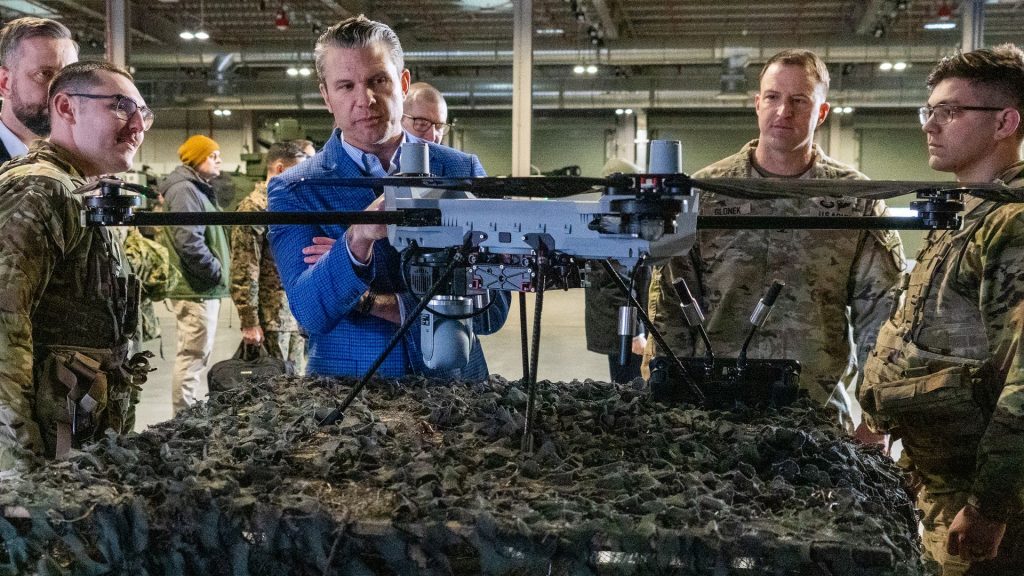US national security budget tops $1 trillion; prioritizes China, missiles, drones

The U.S. Department of Defense (DoD) is officially requesting $1.01 trillion for fiscal year 2026 — the largest defense budget proposal in American history.
Senior defense officials outlined the plan during a briefing at the Pentagon on June 26.
“This historic defense budget prioritizes strengthening homeland security, deterring Chinese aggression in the Indo-Pacific, revitalizing the defense industrial base and maintaining our commitment to being good stewards of taxpayer dollars,” a senior defense official told reporters.
The proposal represents a 13.4% increase from FY2025 and includes $848.3 billion in discretionary spending and another $113.3 billion in mandatory funding that would need to pass through a congressional reconciliation bill.
Where does all the money go?
Out of the $961 billion set aside for the Department of Defense, here’s how the major service branches would divide it:
- $197.4 billion for the Army.
- $292.2 billion for the Navy (including the Marine Corps).
- $301.1 billion for the Air Force, including $40 billion for the Space Force.
- $170.9 billion in defense-wide activities.
The Air Force and Space Force combined are set to receive the largest share, reflecting the administration’s emphasis on space, cyber, and information dominance. However, even with the historically large budget, services will need to be frugal.
“My sense is that the services will actually feel it’s a little bit tighter,” Lt. Gen. Mark Weatherington said.
Weatherington, now retired, is the former Deputy Commander of the USAF Global Strike Command.
“The services are looking at an 8% kind of baseline reduction that’s going to hit. [The funds from] the reconciliation plus that 8% is going to go towards administration priorities,” Weatherington said.
Refocusing the budget: efficiency over expansion
The 8% figure Weatherington referenced stems from a February 2025 directive by Defense Secretary Pete Hegseth requiring all branches to reallocate portions of their budgets toward White House strategic goals. According to defense officials, that directive freed up nearly $30 billion in fiscal year 2025 alone through efficiencies, contract caps and grant reductions.
Those reductions, according to the DoD, along with “contract caps and grant savings allowed for a fiscal realignment into high-priority programs — increasing lethality and readiness.”
Despite the overall increase, that internal belt-tightening means many programs are being scaled back or cut.
The E-7 Wedgetail early warning aircraft was canceled due to “survivability concerns in a contested environment,” and procurement of the F-35 Lightning II stealth fighter will drop from 74 jets to 47.
New spending priorities: Golden Dome and nuclear modernization
The president’s proposed Golden Dome missile defense initiative would receive a $25 billion initial investment, but only if both the discretionary and reconciliation packages pass.
“Something that’s interesting is the Golden Dome down payment is part of the Reconciliation bill, but it is not part of the initial budget request,” Mark Temnycky, a non-resident Fellow at the Atlantic Council, said. “From an analytical perspective, there has been much talk about the significance of the Golden Dome project, how it’s very important for the United States to proceed with this. But it’s curious why they would include that as the reconciliation project and not within the defense budget itself.”
Other key line items include:
- $3.1 billion for F-15EX Eagle II production.
- $3.5 billion for the Next Generation Air Dominance (NGAD) F-47 fighter.
- $6.5 billion for conventional munitions and $3.9 billion for hypersonic weapons.
- $2.5 billion for missile and munitions production expansion.
- $1.3 billion for supply chain improvements.
- $2.5 million for nuclear shipyard productivity upgrades.
- $60 billion for nuclear modernization, including the B-21 Raider, Columbia-class submarines and Sentinel ICBMs.
Spending $60 billion during one budget cycle on nuclear modernization is a big pill for the U.S. taxpayer to swallow, but Weatherington says it only represents about 6% of the total budget and offers immeasurable benefits in terms of deterrence. However, the general admitted it would have been wiser to stagger out the modernization efforts.
“Minuteman III is a great example, right?” Weatherington said. “Fielded in 1980, was supposed to be a 10-year service life, and now we’re 40 years into that 10-year service life. It’s still capable, still ready, but it’s increasingly difficult to sustain it and to keep it ready to do the things that it needs to do. And so we kicked all those things down to the same point in time. If we would have been smarter about it, we would have modernized the missile, the bomber and the submarine legs at different points in time.”
A budget for the drone era
The Pentagon is also making its most significant investment yet in unmanned and autonomous systems, with $13.4 billion set aside in a newly created budget line. It reflects the belief drone warfare and AI-powered systems will define future battlefields.
“Commercial technology has reached such a form of maturity that, you know, our enemies and our adversaries have access to technologies that once only aerospace really surrounded,” Ryan Gury, president and CEO of Performance Drone Works, said.
PDW’s C-100 drone is a program of record in the U.S. Army’s Small Uncrewed Aircraft Systems Program, and the company expects to compete for a larger share of Pentagon contracts in FY2026.
“We’re growing faster than we really can handle, and I think that’s indicative of what the Army’s intent is,” Gury explained. “[The Army is] looking for fast iteration, and very inexpensive, scalable systems. Systems that are designed for manufacturing.”
Gury said the world is now in a new era of warfare, “where inexpensive, one-time use robotics will really lead the way. And I think that the U.S. is doing a great job understanding that, and moving with incredible speed to adapt.”
Pay raises, housing and cyber defense
The proposed budget also includes a 3.8% pay raise for service members, $5 billion for unaccompanied housing and $5 billion for border support operations — a portion of which would be used to fund troop deployments and detention support along the southern border.
Cybersecurity received $15.1 billion in funding to support all-domain operations and defend national interests in cyberspace.
The readiness budget hit a historic high as well.
“At nearly $160 billion, the FY26 budget request funds DOD readiness to a historic high to meet the planned employment of forces,” a senior military official said.
Budget uncertainty remains
While the request is ambitious in scope, much of it depends on Congressional action; particularly the reconciliation package, which contains critical funding for some of the administration’s most high-profile defense initiatives.
“While the defense budget is larger than it was in the last fiscal year,” Temnycky said, “there are still federal employees and government contractors specifically for the Department of Defense who are having their positions terminated or eliminated because of DOGE efforts. So, it’s very interesting to see how will these breakdowns within the defense budget impact not only servicemen and women, but federal employees and contractors working in these realms.”
The fiscal year ends on Sept. 30, and with it, the window for lawmakers to approve a trillion-dollar vision of U.S. defense.





